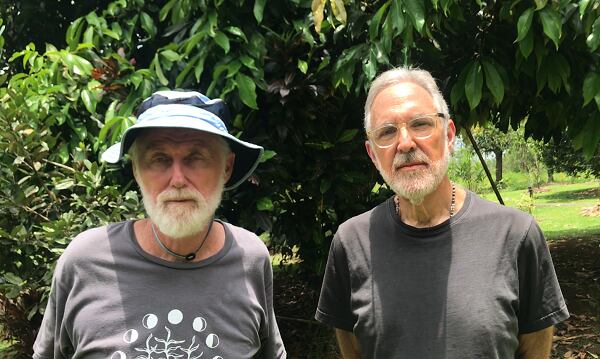But those growers are under pressure to ensure all of these elements are in place, while making it financially viable and not detracting from the all-important food supply chain.
Add to this the fact that demand for natural and organic certified ingredients can make farming practices more complex and increase pressure on resources and land availability, then the need to marry up all of these elements becomes paramount.
Could regenerative farming provide the answer to some or all of these challenges? This is the first in a series of three articles and accompanying videos to tackle the subject, explaining the concept, the importance of soil health, and asking the question about how it can translate into improved foods and botanicals.
Familia Luna Farms, Costa Rica
To find out more, Cosmetics Design visited Familia Luna Farms, a 207 acre certified biodynamic and regenerative project, botanicals research center and eco resort in Alajuela Province, Costa Rica, about an hour’s drive North-west of the country’s capital, San Jose.
The Familia Luna Farm project currently incorporates four farms in the same area – founding farm Finca Luna Nueva, together with Brave Earth, Esplendor de la Luna and La La Luna.

Combined, the resources of the four farms are being developed through a comprehensive three phase 30 year business plan that aims to profitably farm a wide selection of crops that will include cacao, botanical extracts for essential oils and supplements, aquaculture, dairy, bamboo and live stock.
I wanted to discover more about the group’s approach to developing practices aimed at producing healthier crops for applications as diverse as cosmetics, medicines and foods.
To find out more about the project I spoke to Tom Newmark, who is the co-owner of Finca Luna Nueva, the center of the Familia Luna operations, together with Finca Luna Nueva founder, Steven Farrell.
The trailblazing pair have spearheaded the development of the farm, its principles, and the vision to extend regenerative farming practices beyond Finca Luna Nueva, to other parts of Costa Rica, and ultimately, internationally.
Facts about regenerative agriculture
- The practice focuses on rebuilding soil organic matter
- Reduces need for synthetic fertilizers and pesticides
- Increases soil health, improves water cycles and ecosystems
- Enhances resilience to climate fluctuations
- Increases the nutritional profile and active properties of crops
- More sustainable and efficient than organic farming methods
A team led by two leading activists
Tom Newmark has had an accomplished and dynamic career, building up one of the leading supplements companies in the U.S., New Chapter, before selling it to Procter & Gamble in 2012.
On top of that he is also Chairman of Greenpeace Fund USA and Chairman of the American Botanical Council, as well as founder and chair of The Carbon Underground, an organization devoted to practices designed that promote healthier soil and climates.
In the video accompanying this article, Steven, who has devoted his long career to regenerative, biodynamic and organic farming, and is also a founder of The Carbon Underground, explains how the vision for the farm has shaped the project and allowed it to flourish.
“What we see for our farm, and the family of farms that are going to be joining us, is to plant a diverse polyculture based mostly on tree species that would allow us to have a positive effect on sequestering carbon while being a financially positive and lucrative business,” Steven explains.
“We would have systems with the complexity of cacao as the base and then it would be augmented with different trees to create oils for different types of foods, interspersed with different types of herbs and spices that could be used to produce essential oils for both medicinal and cosmetic purposes.”
Spreading the regenerative word worldwide
But there is a more far reaching vision, which aims to influence farming practices locally, nationally and internationally, to spread the word to farmers about the positive attributes of regenerative agriculture.
“We have goals, hopes, dreams of a future where we have the carbon beast tamed, where the excess carbon dioxide in the environment is brought back down to earth,” Tom explains.
“It’s great that we are doing this here but we want it to be economically successful and ecologically vigorous so that we inspire replication, inspiring the more than two billion small holder farmers on the planet to follow us.”
And such measures are working. Encouraged by similar results, farmers worldwide are starting to implement regenerative and biodynamic practices worldwide, albeit on a relatively small scale that remains overshadowed by conventional practices

Dr. Bronner’s makes regenerative a part of its story
One indication that these practices are gaining momentum is the fact that the first cosmetic and personal care manufacturers are starting to incorporate such practices into both the raw material sourcing and the stories for their brands.
Cosmetics Design reported about Dr. Bronner’s aims to ‘Heal Earth’ through regenerative farming practices earlier this year. The natural soaps player became involved in the pilot Regenerative Organic Certification (ROC) program organized by the Rodale Institute, as part of its aims to provide its consumers with natural ingredients sourced from farms that are managed around healthier soil principles.
It is a relatively small start, but it is proof that the message about regenerative is starting to hit consumers’ radars.
The Carbon Underground influence
The team at Finca Luna Nueva is more likely to follow Soil Carbon Initiatives implemented by The Carbon Underground, an organization that has been encouraging larger scale farms to switch to regenerative agricultural practices, to which both Tom and Steven remain active members.
Having been a part of this regenerative agricultural project for more than two decades, Tom’s involvement is rooted in his earlier career in the supplements industry, which explains why the the farm's production initially focused on crops such as organic turmeric and ginger. But as it has evolved the scope and vision for the project has developed in tandem.
Encouraged by the success of these early crops, the farm has become increasingly diverse in scope, giving way to a diverse range of botanicals that currently number over 300 species, while also paving the way for numerous business channels in the future.
“Our goal is to model and from that modelling, inspire replication and with broad enough adoption to achieve a reversal of the carbon dioxide arrow and enriching the ecosystem, creating greater food security, greater water management and water security, greater nutrient density in foods, and most importantly of all creating a livable environment for all life forms on the planet, for the future,” Tom said.
Reducing the need for pesticides
Ultimately, the Familia Luna Farms philosophy is to implement realistic practices that most if not all farmers can easily adopt, while creating more efficient farms that are less reliant on synthetic chemicals.
“The practice is all about positive outcomes – the rebuilding of soil organic matter, including carbon, through biological process. We welcome farmers and ranchers around the world to creatively, imaginatively, and practically implement whatever works to regenerate,” Tom said.
“There are some logistical starting points: Reduce or eliminate tillage. Increase the scope and variety of cover cropping. Planting crops that are more perennial and less annual. And yes, we would expect that over time farmers will not have the need to use as much pesticide or synthetic chemical inputs. But this is not the goal – it’s likely the outcome if farmers regenerate soil health.”
**Watch out for Parts II and III in this series. Published tomorrow and the following day, Part II will look at how crucial soil health is to regenerative farming, while Part III will focus on how the practice translates into high grade botanical extracts with enhanced properties.**



